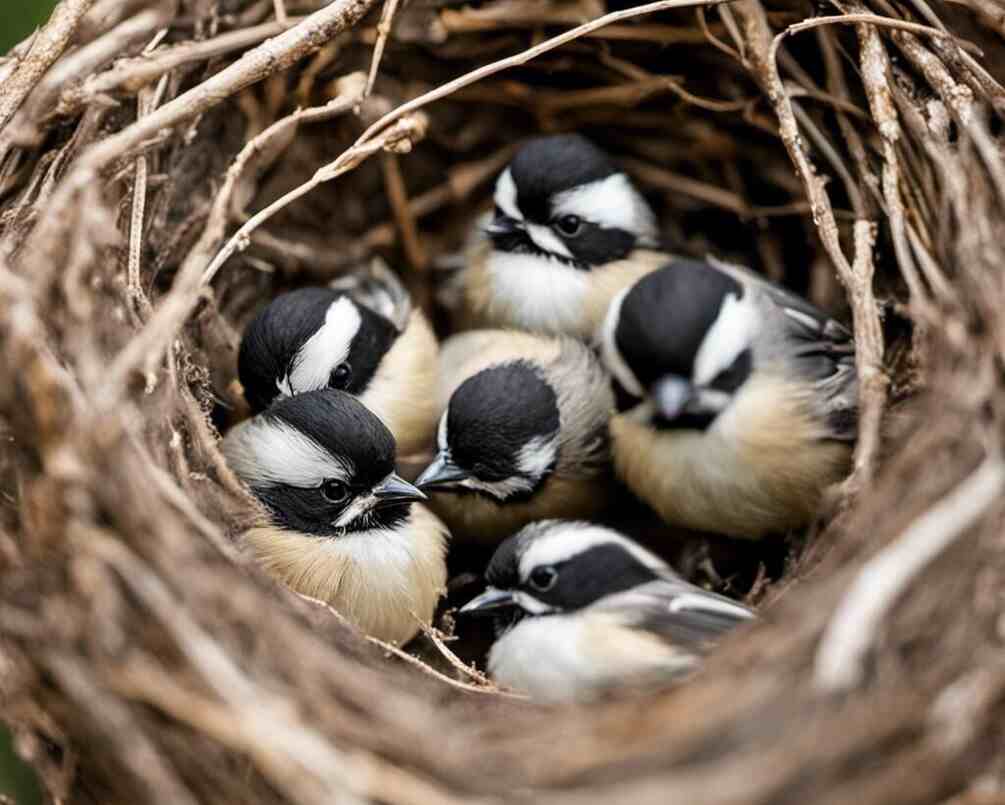As fascinating creatures that can fly, sing, and migrate thousands of miles, birds have always been a subject of interest for scientists and nature-lovers. One of the most intriguing aspects of avian life is their reproduction habits, specifically how often and when they lay eggs.
In this article, we will explore the frequency at which birds lay eggs and delve into their reproduction habits. From egg-laying cycles to environmental factors that influence breeding patterns, we will cover all the essential information about the bird reproductive system.
Table of Contents
- 1 Key Takeaways
- 2 How Many Times A Year Do Birds Lay Eggs?
- 3 Understanding Bird Egg Laying Cycles
- 4 Factors Affecting Bird Breeding Patterns
- 5 The Reproductive Cycle of Birds
- 6 Species Variations in Egg Laying Frequency
- 7 Breeding Strategies of Birds
- 8 Environmental Influences on Egg Laying
- 9 Notable Examples of Egg-laying Behaviors
- 10 Reproductive Strategies for Survival
- 11 Conclusion
- 12 FAQs: How Many Times A Year Do Birds Lay Eggs?
- 12.1 How many times a year do birds lay eggs?
- 12.2 What influences the frequency of bird egg laying?
- 12.3 What are the factors that affect bird breeding patterns?
- 12.4 What is the reproductive cycle of birds?
- 12.5 Do different bird species have varying egg laying frequencies?
- 12.6 What are the breeding strategies employed by birds?
- 12.7 How do environmental factors influence bird egg laying?
- 12.8 Can you provide examples of unique egg-laying behaviors in birds?
- 12.9 How do bird reproductive strategies contribute to their survival?
- 12.10 What are the key findings about the frequency of bird egg laying?
- 13 Author
Key Takeaways
- Birds lay eggs multiple times a year, varying by species and environmental factors.
- Factors that influence egg laying include food availability, temperature, and daylight length.
- Birds have unique breeding strategies, such as monogamy, polygyny, and polyandry.
- Understanding bird reproduction habits is crucial for their conservation and survival.

How Many Times A Year Do Birds Lay Eggs?
The number of times a year birds lay eggs varies depending on the species. Some birds, such as chickens, can lay an egg almost every day, while others, such as eagles, may only lay one or two eggs per year. Most birds lay eggs once or twice a year, typically during the breeding season.
The breeding season can vary depending on the species and the location, but it usually occurs in the spring or summer when food is abundant and the weather is favorable.
During this time, birds will build nests and lay their eggs, which they will incubate until they hatch. After the eggs hatch, the parents will care for the chicks until they are ready to leave the nest.
Understanding Bird Egg Laying Cycles
When it comes to understanding the frequency of bird egg laying, it’s important to first examine the bird egg laying cycle. This cycle can vary depending on factors such as species and environment.
| Stage of Egg Laying Cycle | Description |
|---|---|
| Pre-Laying Stage | During this stage, female birds will prepare for egg laying by building nests and establishing territories. |
| Laying Stage | Once the nest is built, the female will begin laying eggs. One egg is typically laid per day until the full clutch is completed. |
| Incubation Stage | After the final egg is laid, the incubation stage begins. The female will sit on the eggs to keep them warm and protect them from predators. |
The frequency of bird egg laying can vary greatly depending on the species. Some birds, such as the common barn owl, can lay eggs up to six times per year. On the other hand, the American crow typically only lays eggs once per year.
Factors that influence the frequency of egg laying include food availability, environmental conditions, and hormonal changes. For example, a female bird may pause egg laying during times of food scarcity in order to conserve energy.
Understanding Bird Egg Laying Cycles
“During the laying stage, the female will begin laying eggs. One egg is typically laid per day until the full clutch is completed.”
It’s important to note that some bird species, such as the Australian brush-turkey, do not incubate their eggs. Instead, they bury the eggs in mounds of rotting vegetation and allow the heat from the decomposition process to incubate the eggs.
Overall, understanding the egg laying cycle and frequency of bird egg laying is crucial for conservation efforts and the study of bird behavior.
Factors Affecting Bird Breeding Patterns
Avian egg production is influenced by a variety of factors that can affect breeding patterns. Environmental conditions such as temperature, rainfall, and humidity are known to impact the timing and frequency of egg-laying.
Food availability is also a significant factor in breeding patterns. Birds require a steady supply of nutrients to lay eggs, and limited access to food can result in decreased egg production or even abandonment of nests.
Additionally, hormonal changes in birds play a crucial role in egg-laying behavior. Hormones such as estrogen and progesterone stimulate the development of ovarian follicles and influence the timing of ovulation.
The role of genetics in egg-laying frequency is not yet fully understood, but research suggests that some genetic mutations may affect the number of eggs laid by a female bird.
It is important to note that not all bird species exhibit the same breeding patterns. Some birds, such as songbirds such as cardinals and waterfowl, lay clutches throughout the breeding season, whereas others, such as raptors and owls, lay only one or two eggs each year.
Overall, understanding the various factors that influence bird breeding patterns and egg-laying behavior can aid in conservation efforts and help to preserve these marvelous creatures for generations to come.
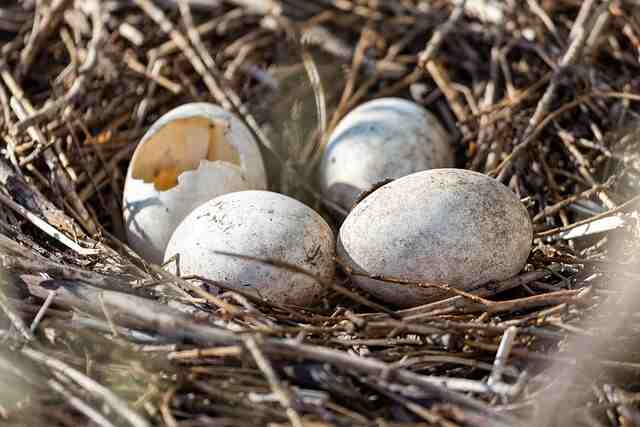
The Reproductive Cycle of Birds
Birds go through a sequence of courtship, nest building, and egg-laying during their reproductive cycle. This process is influenced by various factors, including environmental conditions and hormonal changes.
Courtship behavior varies among different bird species, but it often involves males displaying colorful plumage or performing elaborate mating dances to attract females. Once a pair has formed, they begin to build a nest, usually from twigs, leaves, and grass.
The female then begins to lay eggs, typically one per day until she has laid a complete clutch. The number of eggs in a clutch can vary significantly between species, with some birds laying only one or two eggs, while others lay up to a dozen. The timing of egg-laying can also vary, with some species laying eggs in the early morning and others laying them in the late afternoon.
After the clutch is complete, both parents take turns incubating the eggs to keep them warm and safe. Incubation periods can range from just a few days to several weeks, depending on the species.
Once the eggs hatch, the parents take on the responsibility of feeding and caring for their young until they are old enough to fledge and leave the nest. The length of time that chicks remain in the nest can also vary, but it usually ranges from a few weeks to several months.
Understanding the reproductive cycle of birds is important for conservation efforts, as it can help scientists to identify factors that are affecting breeding success and develop strategies to protect threatened species.
Species Variations in Egg Laying Frequency
Birds exhibit a wide range of egg laying frequencies, with some species laying only once a year and others laying several times. For example, the common loon, a waterbird found in North America, lays only one egg per year, while the house sparrow, a widespread small bird, can lay up to five clutches per year.
Other factors that affect how often birds lay eggs include their size, with larger birds generally laying fewer eggs per year than smaller birds, and their environment, including food availability and temperature fluctuations.
Notably, the Arctic tern, a migratory bird that breeds in the Arctic region, has the longest known migration of any bird, with some individuals traveling up to 44,000 miles in a single year. Despite their extensive travels, they manage to lay one to two clutches of eggs per year, a testament to their remarkable reproductive capabilities.
Similarly, some birds may adjust their egg laying frequency in response to environmental conditions. For example, the common cuckoo, a bird that is known to lay its eggs in other bird’s nests, tends to lay more eggs during years of abundance, when its favored host species have greater nesting success.
Overall, the frequency of bird egg laying varies widely among species and can be influenced by many different factors, making it an endlessly fascinating subject of study for ornithologists and bird enthusiasts alike.
Breeding Strategies of Birds
Birds exhibit a range of breeding strategies, which have evolved to ensure the survival of their offspring. One such strategy is monogamy, where a male and female pair up for a breeding season. This is a common strategy among many bird species, including the Bald Eagle and the Osprey. Monogamous pairs often engage in elaborate courtship rituals before building a nest together and laying eggs. The female typically incubates the eggs while the male hunts for food.
Polygyny is another breeding strategy, where a male bird mates with multiple females. This strategy is common among species where females are responsible for the majority of parental care, such as the Red-winged Blackbird and the Sage Grouse. A male will often establish a territory and attract multiple females to mate with him. The females will then build nests and rear the offspring on their own.
Polyandry, on the other hand, is a breeding strategy where a female mates with multiple males. This strategy is less common among bird species, but is observed in several species, including the Jacana and the Phalarope. In polyandrous species, females will often mate with up to four males, who then take turns incubating the eggs and caring for the young.
| Breeding Strategy | Description | Examples |
|---|---|---|
| Monogamy | Male and female pair up for a breeding season | Bald Eagle, Osprey |
| Polygyny | Male mates with multiple females | Red-winged Blackbird, Sage Grouse |
| Polyandry | Female mates with multiple males | Jacana, Phalarope |
The choice of breeding strategy can often depend on a variety of factors, such as food availability, environmental conditions, and hormonal changes. Understanding these factors can help researchers predict breeding patterns and evaluate the potential impact of human activities on avian egg production and survival.
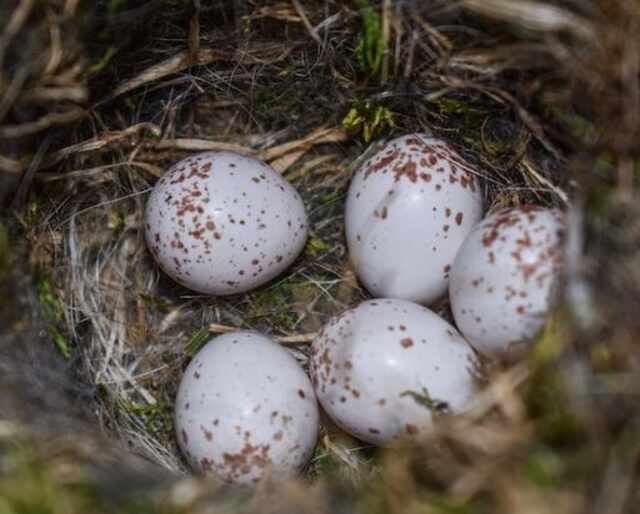
Environmental Influences on Egg Laying
Bird breeding patterns and avian egg production are subject to a wide range of environmental influences. These factors can significantly affect the frequency of egg laying and the overall reproductive success of a bird species.
One major environmental factor that affects bird egg laying behavior is temperature. As a general rule, warmer temperatures tend to increase the frequency of egg laying, while cooler temperatures can inhibit egg production. This is because high temperatures stimulate hormonal changes in birds that promote egg development and maturation.
| Temperature | Egg Laying Frequency |
|---|---|
| Warm | Increases |
| Cool | Inhibits |
Daylight length is another significant environmental factor that influences bird egg laying. Most bird species are photoperiodic, meaning they rely on changes in daylight length to regulate their reproductive cycles. Longer days signal to birds that it is time to start breeding and laying eggs, while shorter days signal that the breeding season is coming to an end.
“Most bird species are photoperiodic, meaning they rely on changes in daylight length to regulate their reproductive cycles.”
Food availability is yet another critical factor that can impact bird egg laying frequency. When food is scarce, birds may delay breeding until conditions improve. Conversely, when food is abundant, birds may lay more eggs per breeding season to take advantage of the resources available.
By understanding the environmental factors that influence bird breeding patterns and avian egg production, we can gain valuable insights into the reproductive habits of different bird species. This knowledge is crucial for effective conservation efforts and ensuring the long-term survival of our avian friends.
Notable Examples of Egg-laying Behaviors
Birds have developed a range of fascinating adaptations to ensure the survival of their offspring. Below are some notable examples of unique egg-laying behaviors exhibited by certain bird species:
| Species | Egg-laying behavior |
|---|---|
| Hummingbirds | Many hummingbird species lay only two eggs per clutch, a low number compared to other bird groups. However, this is because each egg represents a significant investment of resources and energy for the small-bodied hummingbird. |
| Penguins | Emperor penguins are unique in that they lay a single egg and then immediately transfer it to the male for incubation. The female leaves to forage for several months while the male fasts and incubates the egg in his brood pouch. This adaptation allows successful reproduction in the harsh Antarctic climate. |
| Kiwis | Kiwis are flightless birds that lay some of the largest eggs relative to their body size. In fact, the egg can be up to 20% of the female’s body weight! Due to their inability to fly and the risk of predation, kiwis lay their eggs in burrows or nests on the ground. |
These are just a few examples of the incredible diversity of egg-laying behaviors exhibited by birds.
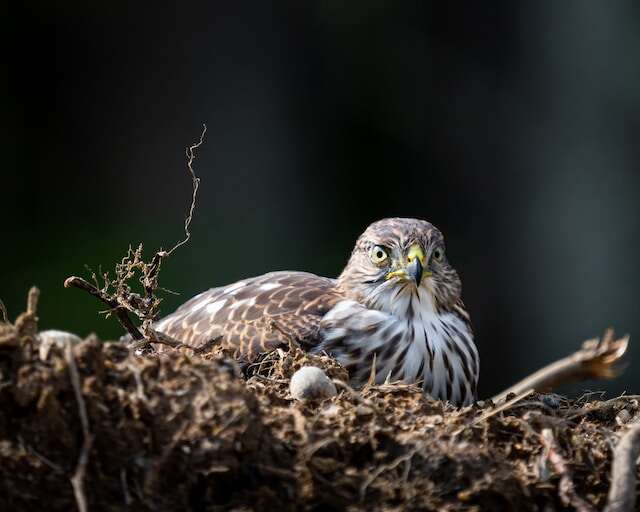
Reproductive Strategies for Survival
Birds have evolved a range of reproductive strategies that allow them to survive and thrive in different environments. These strategies include variations in clutch size, timing of egg laying, and breeding patterns. Understanding these behaviors is crucial for conservation efforts and protecting bird populations.
One important aspect of bird breeding patterns is the variation in clutch size. Different species have different clutch sizes, which can range from just one egg to over a dozen. The size of the clutch is influenced by various factors, including food availability, predator pressure, and the number of offspring that the parents can successfully rear.
The timing of egg laying is another important component of bird reproductive strategies. Some species lay their eggs early in the breeding season, while others wait until later in the year. The timing of egg laying is often tied to environmental conditions, such as temperature and daylight length, which can affect the availability of food and the ability of the parents to care for their offspring.
Birds also exhibit a range of breeding patterns, including monogamy, polygyny, and polyandry. Monogamous species form pairs that mate for life, while polygynous species have one male that mates with multiple females. Polyandrous species have one female that mates with multiple males. These different breeding patterns are influenced by factors such as the availability of mates and the level of parental care required for offspring.
Avian egg production is also influenced by factors such as environmental conditions and hormonal changes. For example, some bird species lay more eggs when food is abundant, while others may lay fewer eggs during periods of stress or low food availability. Hormonal changes can also influence egg production, with some species producing more eggs during periods of high hormone levels.
Overall, understanding the complex reproductive strategies of birds is essential for protecting these important species and ensuring their survival. Conservation efforts must take into account the unique breeding patterns and behaviors of each species to be effective.
Conclusion
In summary, the frequency at which birds lay eggs varies widely among different species and is influenced by various factors such as environmental conditions, food availability, and hormonal changes. Understanding bird egg-laying behavior is crucial to their survival and conservation efforts.
Through our exploration of the egg-laying cycle, breeding patterns, and reproductive strategies of birds, we have learned that birds have adapted various ways to reproduce based on their unique needs and circumstances.
Some species lay a large number of eggs at once, while others lay fewer eggs but more frequently throughout the year. It is important to note that the timing and frequency of bird egg-laying behavior is not stagnant and may be affected by changing environmental and social conditions.
Therefore, it is important to continue researching and monitoring bird reproduction habits to ensure their survival and conservation. In conclusion, understanding the frequency of bird egg laying and their reproductive patterns is crucial to our understanding of these fascinating creatures.
With this knowledge, we can continue to work towards conservation efforts to protect and preserve bird populations for generations to come.
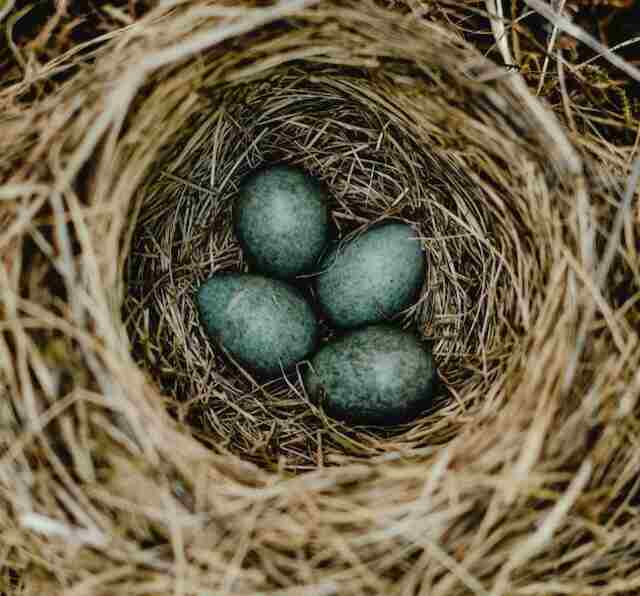
FAQs: How Many Times A Year Do Birds Lay Eggs?
How many times a year do birds lay eggs?
The frequency at which birds lay eggs can vary depending on the species. Some birds, such as songbirds, may lay several clutches of eggs per year, while others, like eagles or owls, may only lay one clutch annually.
What influences the frequency of bird egg laying?
The frequency of bird egg laying is influenced by several factors, including the species’ reproductive cycle, environmental conditions, and availability of food resources.
What are the factors that affect bird breeding patterns?
Bird breeding patterns can be influenced by various factors such as environmental conditions, food availability, hormonal changes, and the presence of suitable nesting sites.
What is the reproductive cycle of birds?
The reproductive cycle of birds typically involves stages of courtship, nest building, egg laying, incubation, and hatching.
Do different bird species have varying egg laying frequencies?
Yes, different bird species exhibit variations in their egg laying frequencies. Some species may lay eggs multiple times a year, while others may only lay eggs once annually.
What are the breeding strategies employed by birds?
Birds employ various breeding strategies, including monogamy (pairing with a single mate), polygyny (having multiple female mates), and polyandry (having multiple male mates).
How do environmental factors influence bird egg laying?
Environmental factors such as temperature, daylight length, and availability of resources can impact bird egg laying behavior. Birds may adjust their breeding patterns in response to these external cues.
Can you provide examples of unique egg-laying behaviors in birds?
Some bird species exhibit fascinating egg-laying behaviors, such as brood parasitism (laying eggs in the nests of other bird species), cavity nesting (laying eggs in tree cavities), and ground nesting (laying eggs directly on the ground).
How do bird reproductive strategies contribute to their survival?
Bird reproductive strategies, including the size of their clutches and the timing of egg laying, play a crucial role in their survival and conservation. These strategies help ensure the proper growth and development of offspring.
What are the key findings about the frequency of bird egg laying?
The frequency of bird egg laying can vary among species and is influenced by factors such as reproductive cycle, environmental conditions, and food availability. Understanding these patterns is important for studying bird reproduction and conservation efforts.

